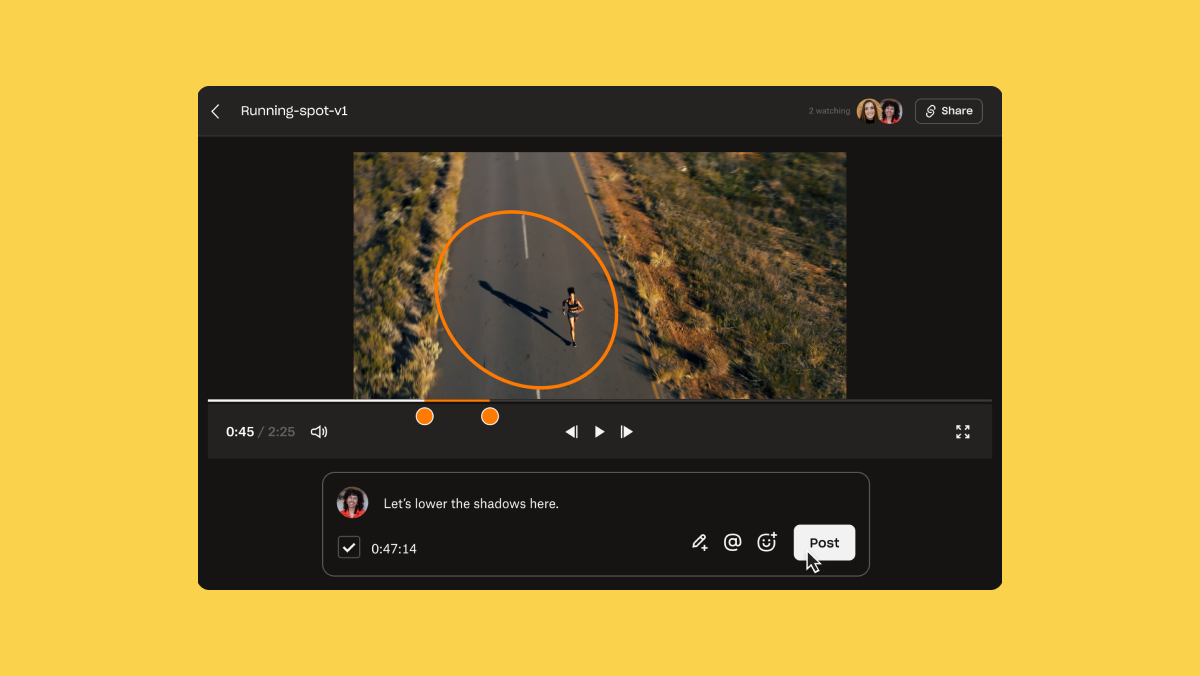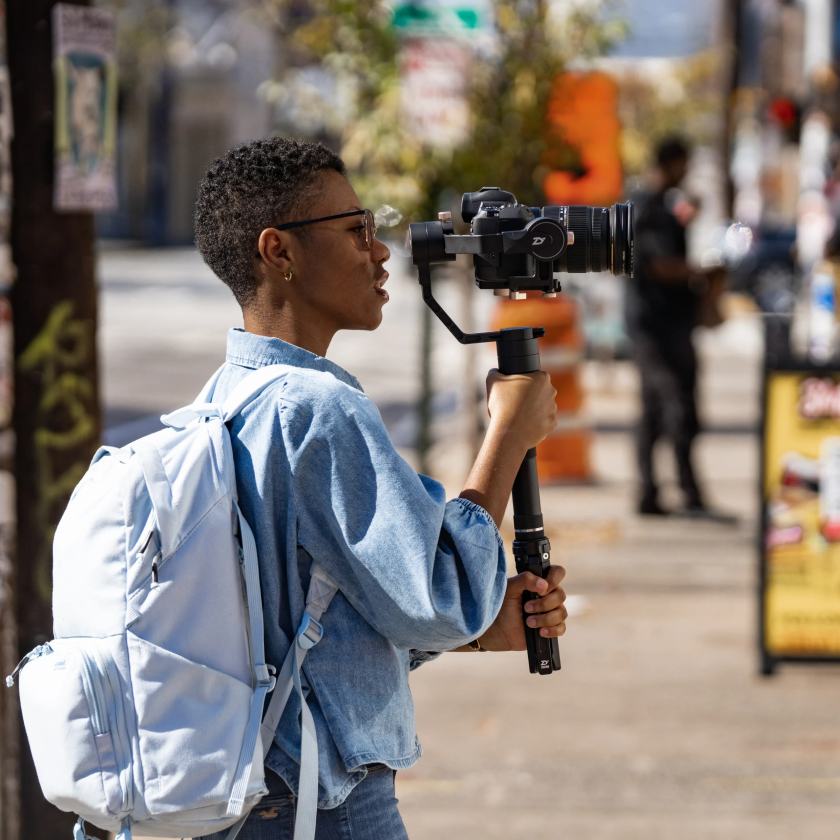Creativity rarely arrives in a perfect first draft. Great ideas are shaped, sharpened, and reworked through a process known as iteration.
Iteration is the foundation of creative innovation. It’s how designers land on the perfect visual, how marketers find the message that sticks, and how teams collaborate to create something better than anyone could on their own.
But iteration can also be frustrating. When systems break down, versioning spirals, and feedback gets scattered, it’s easy for a creative process to start feeling like a never-ending loop instead of a solid methodology. There’s a delicate balance to be struck between smart iteration and overcomplication.
This guide is here to help teams keep iteration productive instead of exhausting. We’ll show you how to build a system that supports faster feedback, clearer collaboration, and better outcomes. You’ll also gain actionable insights on how to avoid burnout.
If you want to optimize the way your team creates and refines together, secure collaboration tools in Dropbox can help you manage versions, track feedback, and keep the momentum flowing—from initial brainstorm to final file.

What is the iterative creative process?
The iterative creative process is a method of working that relies on cycles of feedback and revision—rather than aiming to get everything right on the first try. It contrasts with one-and-done approaches by treating each draft or version as a step toward a better, more effective outcome. Think of it like adding to a painting over time.
Iteration plays a central role in most creative work, especially for teams working in marketing, design, content, or video. It’s simply about using feedback to make measurable progress, quickly and collaboratively—as opposed to shooting for the stars right out of the gate. This improves the experience of project management as a whole.
Here’s a couple of examples of how it might work:
- A creative lead shares a new brand concept with the team. The feedback shapes how the idea evolves, with each version becoming more aligned with business goals and user needs as the project progresses.
- A copywriter develops website messaging that goes through a few structured rounds of input from product, design, and legal, which helps with refining language, tone, and clarity each time.
In these scenarios, iteration allows teams to test ideas, reduce ambiguity, and improve output based on real input. It’s a structured way to move from draft to decision without overcomplicating the process.
Whether you’re working on an iterative design process to improve product functionality or are taking user feedback while brainstorming continuous improvements for your stakeholders, iteration is key. When it works, that is.
Where iteration goes wrong
The iterative process should help creative teams refine their work, but without the right structure, it can lead to confusion, delays, or duplicated effort. This is the delicate balance you need to strike.
Here are a few common pitfalls creative teams often run into:
- Unclear feedback loops: When it’s not clear who should give feedback (or when), ideas get stalled—or move sideways instead of forward. All feedback sharing cycles should be set with idea progression at the forefront.
- Multiple versions with no naming conventions: You might have a dozen files labeled final (and none of them actually are). This leads to mistakes, especially when teams work across time zones or departments.
- Lack of visibility into the latest file versions: Designers and writers can spend hours making updates—only to realize they were working from an outdated file all along. This sort of rework is often an expensive waste.
- Too many tools, too much switching: Jumping between email, documents, company chats, and antiquated storage systems slow down creative flow and fragments context. It’s a key area where things can go wrong.
Dropbox helps solve many of these problems by bringing clarity and structure to each step of the process via:
- File and folder organization: Dropbox makes it easy to keep creative work tidy and discoverable—whether you’re organizing by campaign, channel, or asset type. Simple, clear folder structures give you a better view.
- Shared folders: You can ensure everyone has access to the same materials and sees updates in real time by sharing folders in Dropbox. This is great for sharing collections of assets, which often involve a lot of files.
- Version history: Automatic version tracking helps teams recover earlier drafts and see what’s changed—so no work gets lost and no one overwrites progress. It’s a great bulwark to prevent things from going awry.
- Comments and annotations: Dropbox enables simple feedback to be added directly on files, keeping everything in context and eliminating endless email threads. This consolidates feedback for better iteration.
Iteration isn’t a problem per se, but it’s how you manage it that can make a real difference. With tools like Dropbox, you can reduce friction and keep the process moving forward reliably.
How to build a streamlined iteration process
You don’t need a complicated system to support great iteration, just a clear, repeatable structure that keeps your team aligned and your work moving forward. Here’s a basic framework that works across most creative workflows:
1. Define success criteria before the first draft
Don’t wait until after multiple feedback rounds to align on expectations. The whole team should set goals, guardrails, and must-haves up front—so every iteration builds in the right direction. This will help validate team members’ new ideas and encourage contributions.
2. Centralize all files in a shared folder in secure cloud storage
By using cloud storage in Dropbox, everything lives in one place—so collaborators always know where to find the latest files (and aren’t hunting through email threads). This makes it much easier to be agile. If you need to send a file to an external stakeholder, that’s fine too. Dropbox makes it possible to share files securely without an account.
3. Use version control to track changes
Dropbox automatically tracks updates, so you always have a record of what’s changed—and can roll back to earlier versions when needed. This is great for peace of mind and just stopping and pausing if you see something unusual as a team lead.
4. Provide feedback using in-context comments
Keep reviews focused and actionable by using annotations or comments directly on files—so feedback is always tied to the work, not floating in a separate document or Slack thread. You can easily comment on any file, image, or text preview to leave clear, actionable feedback—including Excel, Photoshop, and Sketch files.
5. Finalize using version history and file sync
When it comes to creative tasks like product design, even small changes can have a big impact. With Dropbox file syncing and version history, your team always works from the right version—no confusion, no duplicates, no delays. This can help to improve the results of a product or piece of software while keeping all team members aligned.
6. For video teams, try Dropbox Replay
Replay lets you leave time-stamped comments on video files—so editors and reviewers can collaborate without needing another tool. This makes it much easier to gather feedback during an iterative cycle. Video feedback is a notoriously slow process, so Replay is a fantastic option for clawing back valuable time.
7. Use Dash for faster asset access
Tools like Dropbox Dash bring powerful universal search to your workflow, helping you locate files instantly or organize projects into shareable, topic-based stacks. You don’t even have to remember the name of the file. You can also generate summaries and answers about files by using Dash Chat.
When iteration is structured, it becomes easier to manage, more productive, and even more enjoyable. With the right process and tools in place, your team can stay focused on refining ideas and avoid chasing files.

Tips for managing creative feedback without chaos
Creative feedback should move a project forward. It’s not meant to spin it in circles.
However, that only happens when the feedback process is organized, visible, and actually tied to the work you’re doing. Here are a few tips to keep iteration sharp and not stressful, using Dropbox:
- Time-box your review cycles with clear milestones: Set deadlines for each round of feedback and keep relevant files in shared Dropbox folders. When everyone knows what’s due and where to find it, it’s easier to stay on track and avoid review fatigue.
- Consolidate feedback in one place: Instead of juggling input from Slack, email, and meetings, use comments and annotations in Dropbox—or Replay for video—to leave feedback directly on files. That way, context never gets lost and you iterate in the right direction.
- Keep a changelog—without the extra work: Dropbox automatically saves past versions of your files, so you don’t have to manually track edits. You can easily revisit earlier drafts, compare updates, or recover something if needed. It’s version control that works in the background.
- Make feedback action-oriented and connected: Keep comments tied to the asset, not a separate document or conversation. That makes it easier for creators to follow through and ensures nothing gets missed. Decisions are trackable, updates are clearer, everyone stays aligned, and drives the project forward.
Ultimately, great iteration about the tools that support your process as much as the process itself. When feedback is easy to give, review, and act on, your team can stay focused on making the work better—instead of figuring out where it lives or what changed.
Create without the chaos—iterate with Dropbox
Iteration is at the heart of great creative work. But without the right systems, it can spiral into a mess of comments, versions, and guesswork. That’s why building a clear, collaborative process—backed up with reliable tools—is essential.
Dropbox helps creative teams of all kinds keep iteration simple. With collaboration features that support real-time feedback, version history, and organized collaboration, you can refine ideas faster, surface the right files instantly, and keep projects moving. Enjoy smoother collaboration and better results.
Frequently asked questions
The iterative process is the methodology of refining creative work through repeated cycles of feedback and revision. Instead of aiming for a perfect first draft, teams share early, gather input, make improvements, and repeat—building stronger ideas over time.
Marketing projects rarely land perfectly the first time—whether it’s messaging, visuals, or campaign strategy. Iteration lets teams test, learn, and adjust in real time, which leads to better outcomes and avoids the cost of one big, final misfire.
A typical creative iteration process looks like this:
- Plan—set goals and define what success looks like
- Create—build your first draft or concept
- Review—collect structured feedback from key collaborators
- Refine—make updates based on feedback
- Repeat or finalize—share again if needed, or ship it when it’s ready
Use a shared folder to store your draft assets and set a clear deadline for comments. With annotations or Replay, reviewers can leave feedback directly on the file. Once that round wraps, review comments together, update your file, and start the next round if needed. Dropbox makes iteration simple, trackable, and avoids confusing email threads.


